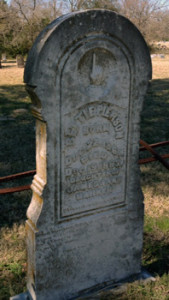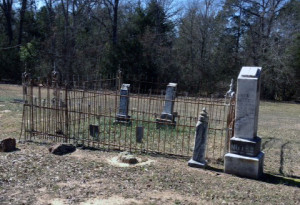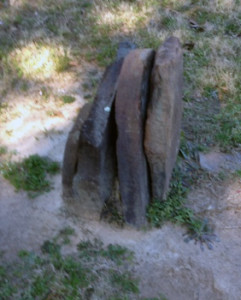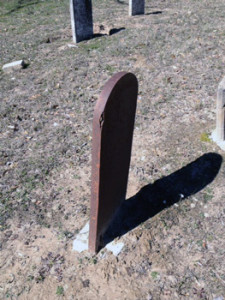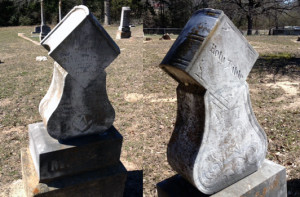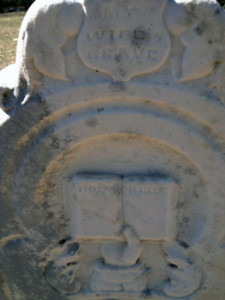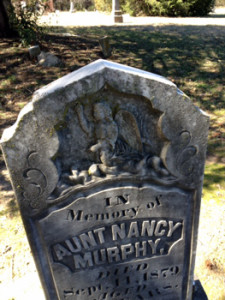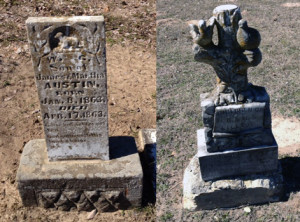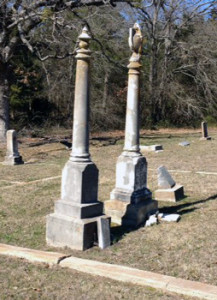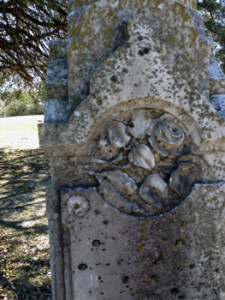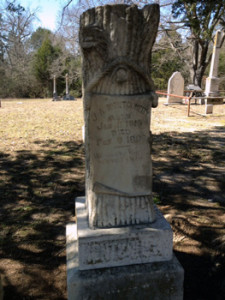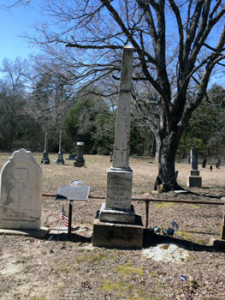
The Emory Cemetery in Rains County, Texas and the grave marker of Emory Rains, for whom the town and county are named.
At first glance the spacious, well-kept Emory Cemetery west of the Rains County courthouse, appeared to be fairly new, at least created around the late 1890s, which is considered new, in North Texas. Being an admirer of Woodmen of the World headstones in their many forms, I was amazed to find none in sight. After all, Rains County was, and still is, a farming area. Woodmen of the World lodges were found throughout southern farming regions.
As I drove away I noticed close to the road a wonderful, old stone with an upheld hand and index finger pointed to Heaven. The sunlight was just perfect to see the craftsmanship. There was another stone beside it and both were enclosed in a lovely old wrought iron fence. I knew I had to return after I finished other business in town.
When I returned a couple of hours later, the sun was further west, causing a glare when I tried to photograph the stones with my cell phone. I resolved then and there to carry my good camera with me anytime I left home. But as I walked through the old part of the cemetery, a short distance south of the main cemetery, I was amazed at the variety of tombstones found.
There were three or four family plots surrounded by intricate fences. Throughout the entire cemetery, graves were neatly arranged in rows facing east, as southern custom dictates. Very old cedar trees added a dignity to the place.
At one site I thought I saw four boards placed together vertically in the ground. On closer observation, they were not boards but smooth sandstone rocks. No markings were visible but this was clearly a unique gravestone. Two metal markers, one larger than the other, probably marked the graves of a parent and child. The metal was rusted, so of course no names or dates could be read. But both looked like a candy box, maybe one inch deep, placed vertically in the dirt. Both had one side missing. That was something I had never seen. Zinc markers were used in the late 19th century, but these were not zinc.
Several stone markers had the characteristic roses, willow trees, hands pointing to Heaven, and the Golden Gates. The tallest monument marked the grave of Emory Rains, the man for whom the town and county are named. Finally I found one Woodman of the World stone, in the classic tree form standing very near an old cedar tree.
The old section was located on a small rise a short distance from the center of town. Most of those buried in there were some of the earliest settlers. I plan to return with a better camera and a notebook to write down observations. Enjoy the photos below.

